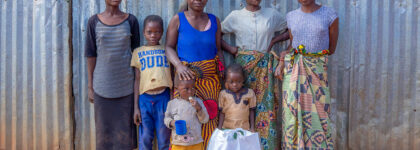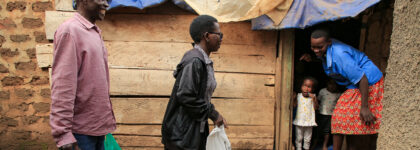In Malawi, nine-year-old Christopher struggles to keep up in school, likely due to cognitive delays caused by ongoing nutritional deficiencies throughout his childhood. In California,…
When you think about modern countries that date back to ancient days, you may think of Greece, Israel, Egypt, or China. But did you know that Armenia is home to one of the oldest civilizations in the world? The world’s oldest known leather shoe dates back to 3500 BC and was discovered in a village in Armenia.
Even the geography has historical significance. Mount Ararat is mentioned multiple times throughout the Bible and is considered a sacred mountain for many Armenians. It is considered by many to be the final resting place of Noah’s Ark, as the Bible records in Genesis 8:4. The Ark is even represented on the Armenian flag. Mount Ararat—and subsequently, the Ark—were within the borders of Armenia until the Treaty of Kars redrew the lines between Armenia and Turkey in 1923. The ruling of this treaty is still refuted by many Armenians today.
Though most Armenians today would love for their homeland to be known for their landscape, their art, and their rich cultural heritage, many people are more familiar with the Armenian Genocide. While most of the world was preoccupied with World War I raging on in France and Germany, as many as 1.5 million Armenians were killed. The Ottomans had viewed the Armenians as second-class citizens since the mid-1400s. In 1915, the Ottoman Empire used a failed campaign against Russia as an excuse to blame Armenia for their losses. Many Armenian men were immediately rounded up and executed. Armenian women and children were deported to the Syrian Desert, which basically amounted to a death sentence. By 1923, half of the population of Armenia had been killed.
By the end of the genocide, Armenia had been annexed into the Soviet Union under a Communist regime. The Armenian Soviet Socialist Republic lasted from 1920 to 1991, ending with the dissolution of the Soviet Union.
Though newly independent, Armenia suffered a hit to its economy following the Soviet Union’s collapse. Many people found themselves out of work and had to quickly transition to different trades
Though the economy of Armenia has gradually made improvements, there remains a stark contrast between the very wealthy and those struggling to provide for basic needs. In Armenia, one in three children lives in poverty.
In 2017, discussion began between Children’s Hunger Fund and Armenia Relief and Development Association (ARDA) about a formal partnership. When plans were finalized a few years later to launch a Mercy Network of churches, the in-person training had to be cancelled due to the pandemic. Thankfully, a new strategy was implemented to train churches in relational mercy ministry through a virtual training. The Armenian Mercy Network was launched in October 2021 with a total of eight churches, primarily located in the capital city of Yerevan.
Please join us in praying for these faithful pastors and church volunteers who are committed to sharing the saving grace of Jesus Christ with the suffering families in their communities. We are grateful for the opportunity to partner with and support gospel-centered churches around the world.




